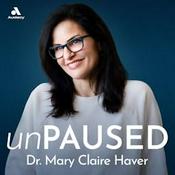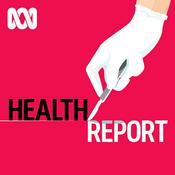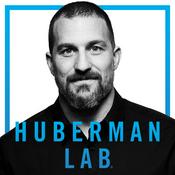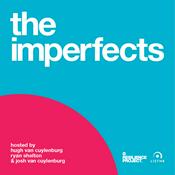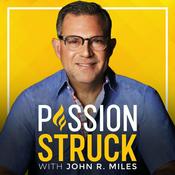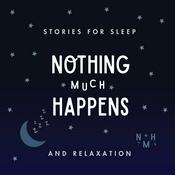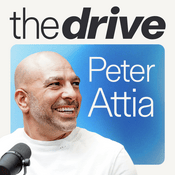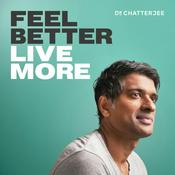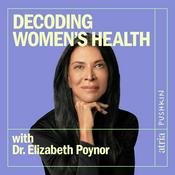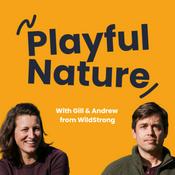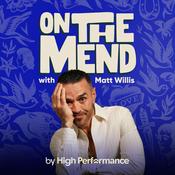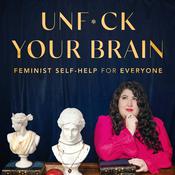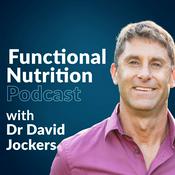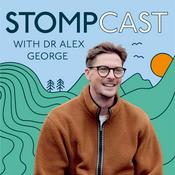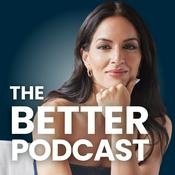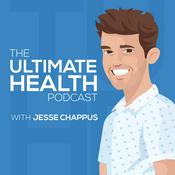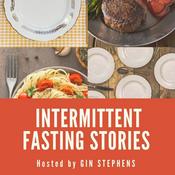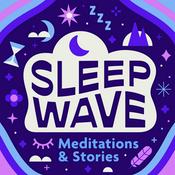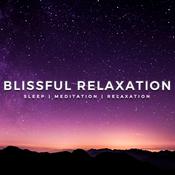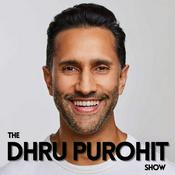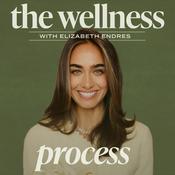11 episodes

Can One Person Change the World of Cancer?
06/10/2025 | 33 mins.
In a recent conversation with Dan Pfeiffer, historian Heather Cox Richardson discussed the American deification of self-reliance, represented by the loner cowboy from the 1950’s on. “The myth of the American cowboy,” Richardson posited, “is that he is a true American and wants nothing from the government but to be left alone. He dominates women; he dominates the minorities around him; and he’s good with a gun.”Richardson reminds us, however, that the rough and tough cowboy was really a mirage. Most cowboys were non-white, relied on each other and lived in a world where guns had to be surrendered to enter a town. Richardson feels the American story is instead, represented by another image, “That was to be somebody who believed in community and believed in making sure that you protected your weakest members and made it possible for everybody to have a shot at equal access to resources so they could work hard and rise.” In America, according to Richardson, “if you are an individual, you have the power to change the country. You have the power to change your life, you have the power to change the world by working together the way people did during World War II, or the strikers did in the late 1890s, or the civil rights workers did in the 1960s.”I believe this is true in cancer as well. Cancer is a disease that impacts an individual, but it is experienced in community. Whether in a family, friend group, religious community or workplace. Cancer is a communal diagnosis because it will touch each of our lives. It also places the individual among the long line of those that have come before them and those that will come after. Each person has an opportunity to change the future for the next patient. Some do that locally, supporting friends and strangers who whisper a new diagnosis over coffee. Others form research organizations to find earlier detection tests or better treatments. Still others are propelled to enter the arena and become oncologists, caring directly for cancer survivors and their families.Thanks for reading Cancer Culture! Subscribe for free to join the conversation. The last category is the one I will be focusing on during the month of October. These are patients and family members who put their shoulders to the boulder of progress and push it forward. In some cases, these activists moved cancer out of dark corners and into the public light. In others, they demanded a voice in their care. And still others provided millions of dollars in research funding and organized publicity campaigns I will be turning over the Cancer Culture Substack to biographer, Judy Pearson. Judy is a breast cancer survivor, author and friend whose new book, Radical Sisters, highlights the impact of three incredible women who dedicated their lives to changing the world of breast cancer. Shirley Temple Black, Rose Kushner and Evelyn Lauder ignited a movement that changed the world.Susan G. Komen founder Nancy Brinker remembers working alongside these women, “We worked at a time when the word breast could scarcely be uttered in public, let alone printed in mass media advertising. Our paths were shaped by shared goals but also marked by occasional differences. We competed, debated and sometimes squabbled, but beneath it all, there was a deep and abiding respect. Though we came from different places, with different stories, our purpose united us: To life the veil of silence surrounding breast cancer and to create a world where this disease no longer threatened the lives of women.”As Cox-Richardson reminds us of and these three women demonstrate, WE all have the power to change our lives and the world around us by working together.To orient yourself to these stories, I recommend listening to the Bonus Episode of Less Radical which I’ve reposted above. As always, I look forward to hearing your thoughts. This is a public episode. If you would like to discuss this with other subscribers or get access to bonus episodes, visit cancerculture.substack.com

When Surviving Cancer Isn't Enough
30/06/2025 | 56 mins.
The largest cancer meeting in North America just wrapped up. Held annually in the spring. the American Society of Clinical Oncology meeting is where many big advances and discoveries are announced. This year, the highlights included a study that showed that moderate exercise improved survival in colon cancer patients as much or greater than many chemotherapy agents. Another study showed that treatment for breast cancer could be modified based on levels of cancer DNA circulating in the blood, increasing the lead time and success rate of new treatment over waiting for imaging tests to show new “spots.”In reflecting on these findings, oncologist Daniel Flora, MD, PharmD pointed out a flaw in how we talk about “success” in clinical trials. The endpoints that researchers typically use are binary and designed to counter ambiguous interpretations. Overall Survival, for example, measures if patients are alive or dead. Progression-Free Survival measures if patients are alive with their cancer controlled or uncontrolled. These yes/no answers condense complicated scientific questions into concrete endpoints that are useful for regulatory bodies like the FDA to make decisions about approving a drug treatment for routine clinical use.Dr. Flora pointed out that most of us would agree that being alive is great. However, patients surviving cancer often have a more nuanced view. Many older patients begin conversations with statements like “I want QUALITY of life” or “I don’t want to suffer.” A rubric to incorporate these wishes does not exist. Would a patient, for example, trade a better quality of life for a 20% less chance of cure? 10? 5?Today, I invite you to listen to a conversation I had with two cancer survivors. Both Mark and Yvonne are alive without active cancer. In our professional parlance, they would be considered success stories. And as you hear them talk about their lives after cancer treatment, they are living.But they are living with life-changing side effects. You will hear about how large chunks of their identities disappeared in the aftermath of cancer treatment. These sacrifices are part of the hidden cost of cancer that is not often discussed (and certainly not used for approval) of new treatments. Years after their last treatments, they have accepted their “new normal” but aren’t satisfied. They want better treatments for those diagnosed now.Afterwards, I talk with a colleague, Dr. Bhishram Chera, about his groundbreaking work in studying less toxic ways to treat patients like Mark and Yvonne.I’m not sure, however, that we should be throwing these trials out. Would I, for example, be willing to sacrifice a 5% increase in the chance my cancer would return if I had a better chance of being able to taste food for the rest of my life? Perhaps. But right now, I wouldn’t have that choice. It would be considered unethical to even discuss it.Enjoy and I look forward to hearing your thoughts in the comments. This is a public episode. If you would like to discuss this with other subscribers or get access to bonus episodes, visit cancerculture.substack.com

Vote for us in the Webby Awards!
02/04/2025 | 1 mins.
I’m thrilled to tell you that Less Radical has received TWO nominations in the 29th annual Webby Awards: We’re up for Best Indie Podcast - Limited Run and Best Podcast - Documentary. We were chosen out of 13,000 entries! We’re up against companies like Audible, Wondery, Mother Jones, and Al-Jazeera, so we need your help. You can vote for Less Radical in both categories until midnight PT on Thursday, April 17th.* Vote for Less Radical for Best Indie Podcast - Limited Run* Vote for Less Radical for Best Podcast - DocumentaryAnd after you’ve voted, tell a friend! We’re so grateful for your support of our tiny but mighty team. Together we can make Dr. Bernie Fisher a household name! This is a public episode. If you would like to discuss this with other subscribers or get access to bonus episodes, visit cancerculture.substack.com

BONUS: What Could Be Better Than a Mammogram?
11/12/2024 | 34 mins.
Mammograms were introduced fifty years ago. Recommendations for women to have annual screening mammograms began thirty years ago. The hope was that by finding breast cancer early, we could drastically reduce the number of women dying from breast cancer. And in some ways, we have been successful. The problem with annual screening mammograms is that it is based on the assumption that every breast cancer follows the pattern - progressing from a pre-cancerous lesion to a more aggressive tumor in a logical, linear way. Today, we know this isn’t true. Yes, some cancers are slow growing. So slow growing that they may not need treatment at all. But others, especially those in young women, grow fast. So fast, in fact, that they develop into masses in between annual mammograms. Or develop in women that are “too young” to be screened. And why aren’t we doing more to prevent breast cancer from forming in the first place? Why aren’t we finding women at high risk and doing more than just pushing them into radical surgeries?TLDR: Our current breast cancer screening paradigm is not working. We are doing too much for some women and not enough for others. Today, I’m talking with two women who think women deserve better than this outdated, one-size-fits-none approach. Martha Kaley is a breast cancer survivor and founder of Earlier.org: Friends for an Earlier Breast Cancer Detection Test. Martha’s breast cancer was not mammographically detected. She is also tired of the same old debates about what age we should start screening women for breast cancer. Martha has dedicated her life to supporting innovation in earlier detection methods - finding a better test than a mammogram. Dr. Laura Esserman is a surgeon and professor at University of California - San Francisco. She’s spent her career trying to find less radical ways to treat breast cancer. Now she’s leading a study trying to find the best way to screen women for breast cancer. (Hint: it’s probably not going to be annual mammograms for everyone.)Screening will never be perfect. It’s not now. But why are we settling? What if we demanded a screening approach that was better than a mammogram? Do something… This is a public episode. If you would like to discuss this with other subscribers or get access to bonus episodes, visit cancerculture.substack.com

Episode 5: Bureaucrats, Administrators, and Politicians
23/10/2024 | 54 mins.
When a colleague’s misconduct is discovered, Fisher is forced to resign from the NSABP and becomes the subject of a Congressional investigation. As the walls close in, Fisher fights back. He spends the rest of his life trying to restore his reputation. This is a public episode. If you would like to discuss this with other subscribers or get access to bonus episodes, visit cancerculture.substack.com
More Health & Wellness podcasts
Trending Health & Wellness podcasts
About Less Radical
Listen to Less Radical, unPAUSED with Dr. Mary Claire Haver and many other podcasts from around the world with the radio.net app

Get the free radio.net app
- Stations and podcasts to bookmark
- Stream via Wi-Fi or Bluetooth
- Supports Carplay & Android Auto
- Many other app features
Get the free radio.net app
- Stations and podcasts to bookmark
- Stream via Wi-Fi or Bluetooth
- Supports Carplay & Android Auto
- Many other app features


Less Radical
download the app,
start listening.
